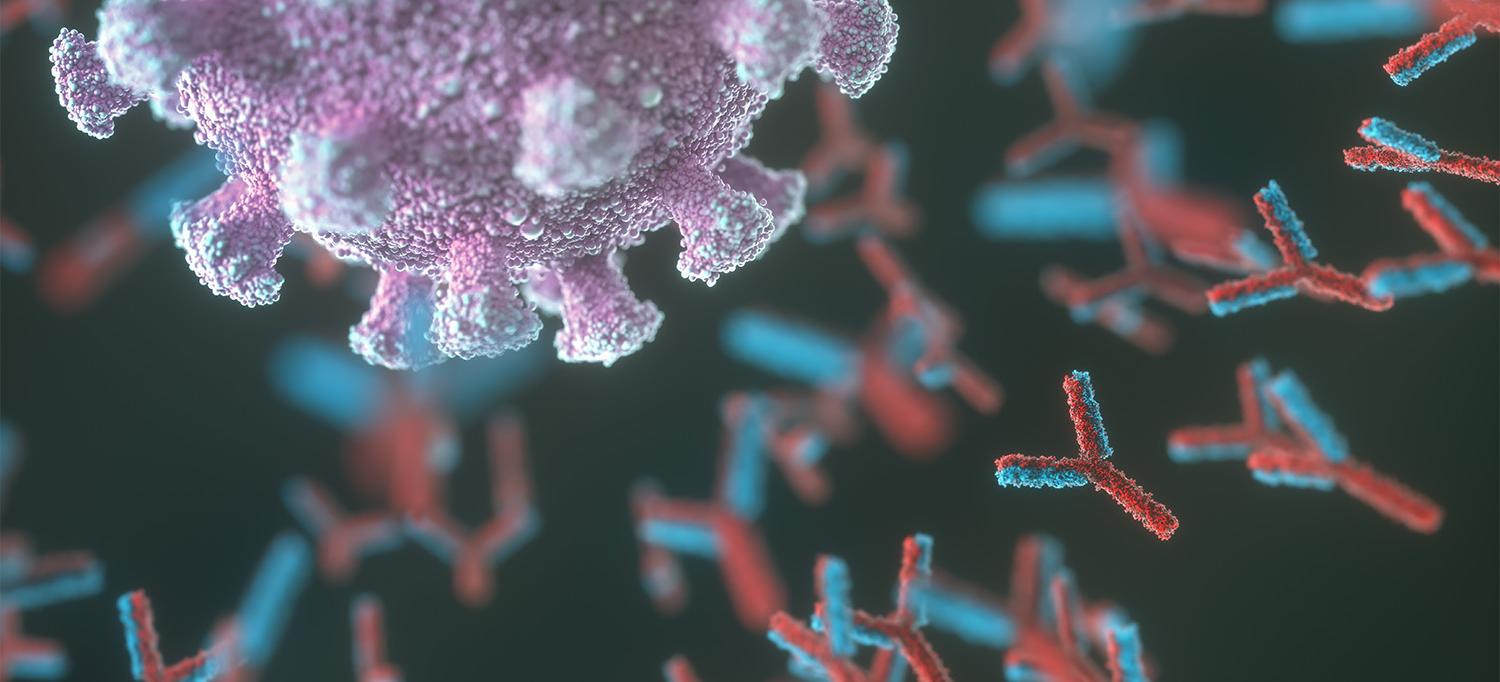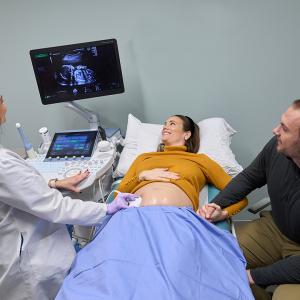
NYU Langone researchers are investigating COVID-19 antibody responses in lupus patients.
Photo: KTSDESIGN/SCIENCE PHOTO LIBRARY/Getty
The underlying immune dysregulation in patients with systemic lupus erythematosus (SLE) and their frequent treatment with immunosuppressants have prompted concerns that such patients could be at greater risk for coronavirus disease (COVID-19). A large multidisciplinary study at NYU Langone Health, however, previously supported prior findings that neither lupus-specific factors nor immunosuppressant use appear to increase the risk of infection with the SARS-CoV-2 virus. Among patients who tested positive, a follow-up study has now found that most produced a significant and durable SARS-CoV-2 IgG response, suggesting that these SLE patients may be at least partially protected against reinfection.
Seroprevalence Rates May Suggest That SLE and Therapeutic Regimens Are Not Associated with Higher Risk for COVID-19
In July 2020, NYU Langone researchers published a large study concluding that for SLE patients with PCR-confirmed COVID-19, variables predicting hospitalization matched those of the general population. But given the absence of antibody testing at the time, the study couldn’t capture all potential COVID-19 infections, particularly those that might have been relatively asymptomatic. Led by Amit Saxena, MD, assistant professor of medicine, a follow-up study in The Lancet Rheumatology has used antibody testing to provide a more comprehensive assessment of COVID-19 prevalence among 329 lupus patients from 2 overlapping cohorts at NYU Langone who were recruited primarily as part of routine care.
Overall, the study found that 15.5 percent of the lupus patients had a reactive SARS-CoV-2 antibody test, compared with seroprevalence estimates of about 20 percent in New York City. Within their lupus cohort, Dr. Saxena and colleagues found that seropositive patients were more likely to be Hispanic, and theorized that Hispanic people may have increased exposure to COVID-19 due to systemic drivers impacting their living and working conditions. The researchers, however, found no association between immunosuppressant medications, hydroxychloroquine, or steroid use and COVID-19 seropositivity.
Durability of SARS-CoV-2 IgG Production in Most SLE Patients Points to Lower Risk of Reinfection and Higher Likelihood of Vaccine Protection
A second study arm assessed the extent to which SLE patients who tested positive for COVID-19 developed antibodies against the virus. For patients on lupus medications, especially those that lower immune responses, Dr. Saxena says, clinicians have been concerned that antibody production might be altered. “That also has some indirect associations with vaccinations going forward: Can patients on these medications mount a protective response to those vaccines?” he says.
Of the SLE patients with PCR-confirmed COVID-19, the study found that 83 percent subsequently developed an antibody response to SARS-CoV-2, despite 62 percent being on immunosuppressants. In a subset of patients for whom the initial date of COVID-19 diagnosis was known, 88 percent retained their antibody response 10 weeks later; by 40 weeks, 70 percent still retained positivity. “Probably the biggest take-home point of this study is that the immune response is functional and enough to react to the SARS-CoV-2 virus for the vast majority of our lupus patients, despite the use of immunosuppressants,” Dr. Saxena says.
The patients who were the sickest with COVID-19 sustained their positivity, he notes, while those who lost their positivity started out at the lowest titers. Antibody production is only one component of the body’s complex immune reaction, and Dr. Saxena says memory T cell responses could afford even longer-lasting immunity than antibody responses. “I think it’s safe to say that there’s likely some protection from reinfection in patients who develop these antibodies,” he says. How they may respond to vaccines is a harder question to answer. “But assuming that these patients can generate antibodies to the virus, then there’s no real reason to think they couldn’t create antibodies to antigenic stimulus from a vaccine also, although not all patients were reactive,” he says.
Researchers and clinicians remain concerned that 5 COVID-19–positive patients (17 pervent) did not meet the laboratory threshold for a positive antibody response to the virus, though the study found no clear patterns associated with that negative response. Other studies have found undetectable neutralizing antibodies in a small percentage of patients with milder COVID-19, though Dr. Saxena says several of the SLE patients with negative antibodies had titers just below the positive threshold, suggesting earlier reactivity. The question of whether those patients may have retained some immunity will require additional study of the broader immune response, and Dr. Saxena and colleagues are now testing patients’ immune responses two weeks after vaccination to determine the presence and extent of neutralizing antibodies.
Completing the ambitious study, he says, relied on extensive communication throughout the medical center and the ability to draw upon NYU Langone’s large lupus patient cohorts. “It was a huge team effort. It was really a system-wide endeavor to get this information out as quickly as possible during the height of the pandemic,” Dr. Saxena says. “It’s a large number of patients for a lupus study, and being able to mobilize quickly and accurately speaks to the strong infrastructure we have in place here.”

